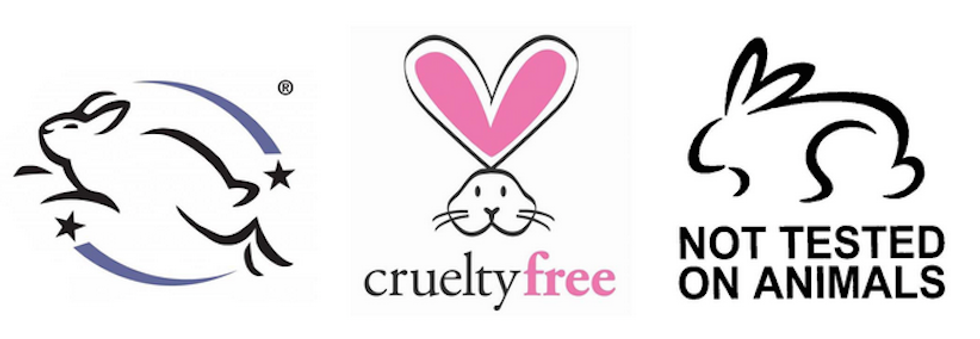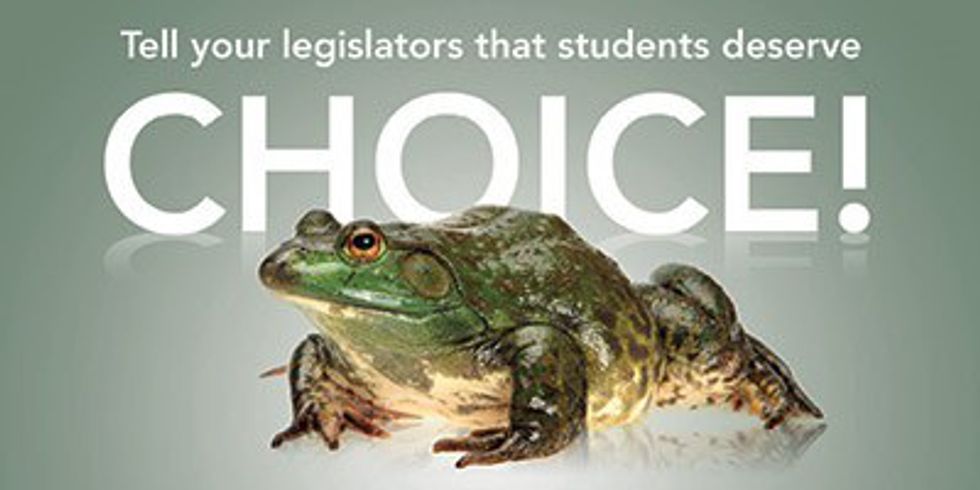There are many ways to help animals used in laboratories and alternatives to animal testing, said a PETA campaign coordinator.
There are a few simple ways to help animals used in labs and prevent more animals from being tested on, said Amber Canavan, PETA campaign coordinator and member of the People for Animal Rights in Central New York. Some examples are buying cruelty free products for personal use and to give to others to prevent them from buying non-cruelty free.
According to peta.org, some cruelty free companies are Yes to Carrots, Physician’s Formula, Tom’s of Maine, and Pacifica. Cruelty free products will most likely have a symbol like the one below somewhere on them.
Another way to help is to not dissect animals, she added. According to aavs.org, 18 states, including New York, follow the Student Choice Laws. This means students in high school have the right to say no to dissecting an animal for class purposes without penalization.
Some more personal methods are getting involved politically and scientifically. The Animal Welfare Act does not cover rodents and amphibians, which are the most commonly used animals for testing, Canavan said. A political stance on this could help modify this law. People could also donate their body to testing or volunteer to take part in clinical trials so animals don’t have to be used, she added.
Along with using human subjects, trauma dummies can also be used in place of animals. These are more similar to humans than animals, meaning test results will be more accurate for humans.
Animals are tested on for both human and nonhuman products. Some basic human products include cosmetics and personal hygiene items, like shampoo and soap. Pharmaceuticals are another human product that are tested with the use of animals. Some animal products that use animal testing are medicines and pet food, like Iams.
“Iams was experimenting on dogs and cats for their dog food, mostly for health claims and marketing, not to make sure that the food was safe,” Canavan said. “They were feeding the animals these foods and then literally cutting chunks of muscles off their bodies.”
Animals testing is going on all around us, Canavan said. There’s testing at SUNY Upstate, Marshall Farms, Cornell, and Syracuse University. Some animals tested at these sites are cats, rodents, ferrets, finches, pigs, and beagles. The cats used for tests have to be reported, Canavan said.
There’s been opposition to animal testing since people first started doing it. The contemporary animal rights movement started in the late 1970s. The People for Animal Rights was established in 1982. According to peta.org, the Silver Springs Monkey Case is what launched PETA. It involved 17 monkeys being tested on and kept in filthy cages covered in years of feces. This case resulted in the first arrest and criminal conviction for animal cruelty.
“Experimenting on animals is ineffective,” Canavan said. “It’s not telling us what’s happening with humans, and it’s wasting money and wasting resources that could be going toward developing science that actually applies to humans.”
“We have no idea how many people’s lives we could’ve saved if we had just gotten over these people experimenting on animals and their crocodile tears that we need to use animals because there’s no other way,” Canavan added. “That’s just academic laziness.”
Animals in lab testing feel pain, Canavan said. These beings don’t feel pain differently from each other or from humans.
Canvan’s presentation on this issue was sponsored by PAR, a group she’s been a part of since she was 15.
“The purpose of PAR is to work for animals’ rights and environmental protection,” said Linda DeStefano, president of PAR. The two are linked, and we need a healthy earth to support us.
To bring awareness about how common animal testing is, PAR members have gone to schools to talk about animal rights and have done peaceful protests. They also put out a newsletter that has information about programs, current issues regarding animals, and vegan recipes. There’s also information about animal testing in labs.
The organization holds public programs with speakers and video content. PAR also puts on vegan socials and helps educate people on how to become mentors for others on how to go vegan, or make an effort toward a vegan lifestyle.
“Animals are not ours to experiment on, eat, wear, or exploit in any cruel way,” DeStefano said. Testing on animals is cruel and is unnecessary.
“It’s better for humans to test on humans,” she added.























